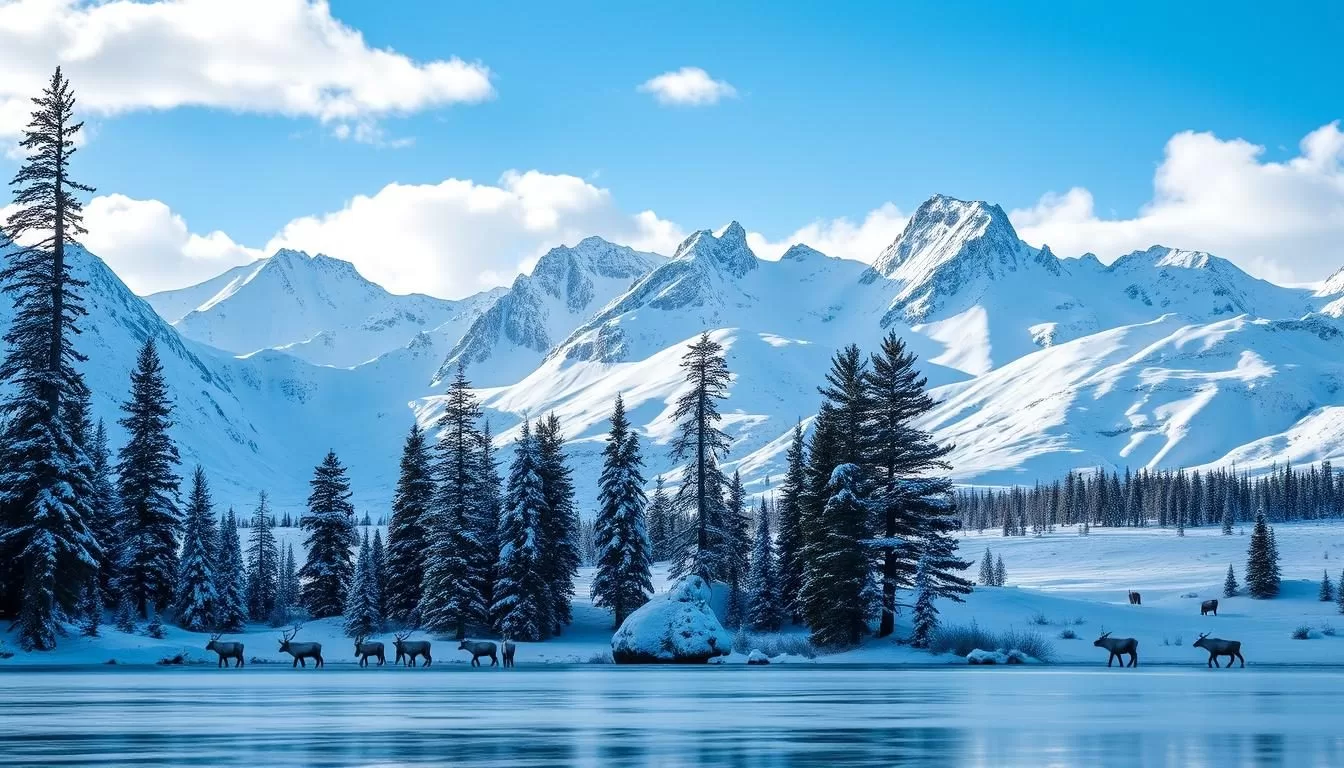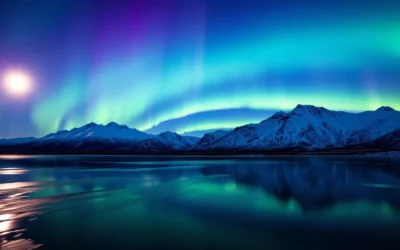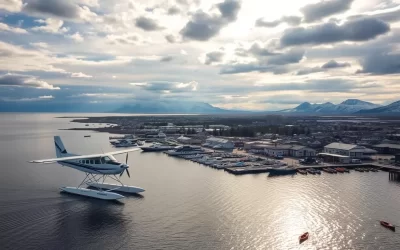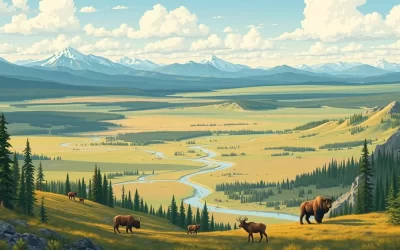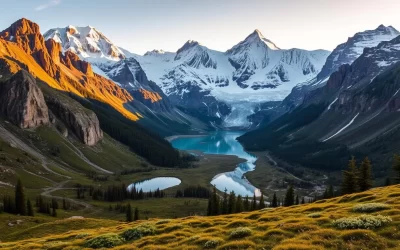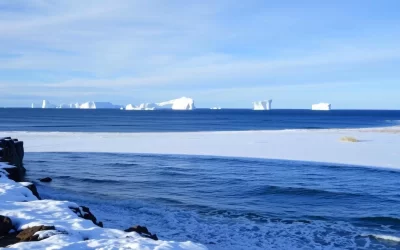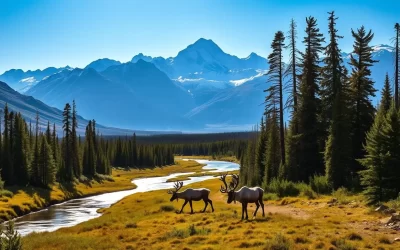✓ Accommodations✓ Flights✓ Rental Cars
Imagine immersing yourself in one of Canada’s most pristine wilderness areas, where the Arctic landscape unfolds in all its beauty. Located on Banks Island in the Northwest Territories, Aulavik National Park is a haven for wildlife enthusiasts and adventure seekers alike.
Established in 1992, this vast national park protects over 12,200 square kilometers of Arctic lowlands, featuring diverse landscapes, deep river valleys, and coastal regions. The park’s name, meaning “place where people travel” in Inuvialuktun, reflects its historical importance as a traditional route for the Inuvialuit people.
As you explore Aulavik, you’ll experience the true essence of the Arctic, with opportunities to paddle the Thomsen River, view an array of wildlife, including muskoxen and Arctic wolves, and hike across the Arctic tundra, creating an unforgettable adventure and experience.
Discovering Aulavik National Park: An Arctic Wilderness Paradise
As you step into Aulavik National Park, you’re immediately immersed in the untouched beauty of the Arctic. This vast wilderness area is a treasure trove of natural wonders and rich cultural heritage.
Location and Geography
Aulavik National Park is situated on Banks Island in the Northwest Territories of Canada. The park’s diverse geography includes rugged terrain, vast tundras, and numerous waterways, making it a unique and fascinating destination.
The Thomsen River, which runs through the park, is one of the most northerly navigable rivers in North America.
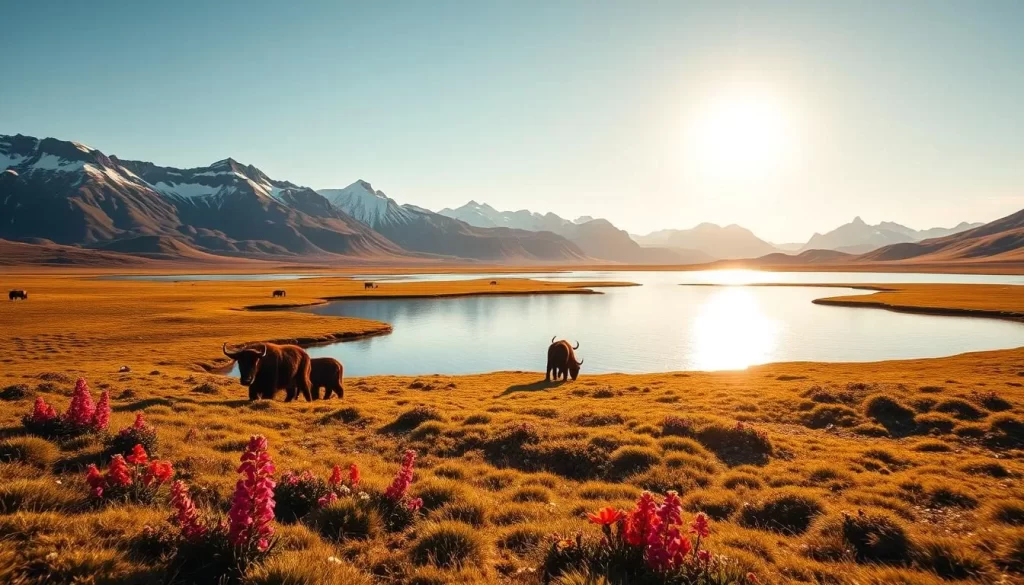
The Meaning Behind the Name
The name “Aulavik” originates from the Inuvialuktun language, meaning “place where people travel.” This name was suggested by an elder from Sachs Harbour, the only community on Banks Island.
The name reflects the park’s historical significance as a traditional travel route and gathering place for the Inuvialuit people. The cultural importance of this land is still celebrated today, with the community maintaining strong ties to the area.
The park’s name honors the deep connection between the land and the indigenous people who have traversed this territory for thousands of years. Understanding the origin of the name provides insight into the human history of this seemingly untouched wilderness and highlights the importance of preserving both its natural and cultural culture heritage.
The Rich History of Aulavik National Park
As you explore Aulavik National Park, you’ll uncover a history that spans thousands of years, from the early inhabitants to its establishment as a national park. This rich history is a testament to the resilience and adaptability of the people who have called this Arctic region home.
Indigenous Heritage and the Inuvialuit People
The Inuvialuit people have a deep connection to the land that is now Aulavik National Park. Their history in the region is marked by a strong tradition of hunting and whaling, which sustained them for generations. The community of Sachs Harbour, established on the southwestern tip of Banks Island, remains a significant settlement for the Inuvialuit. Their cultural heritage is an integral part of the park’s identity.
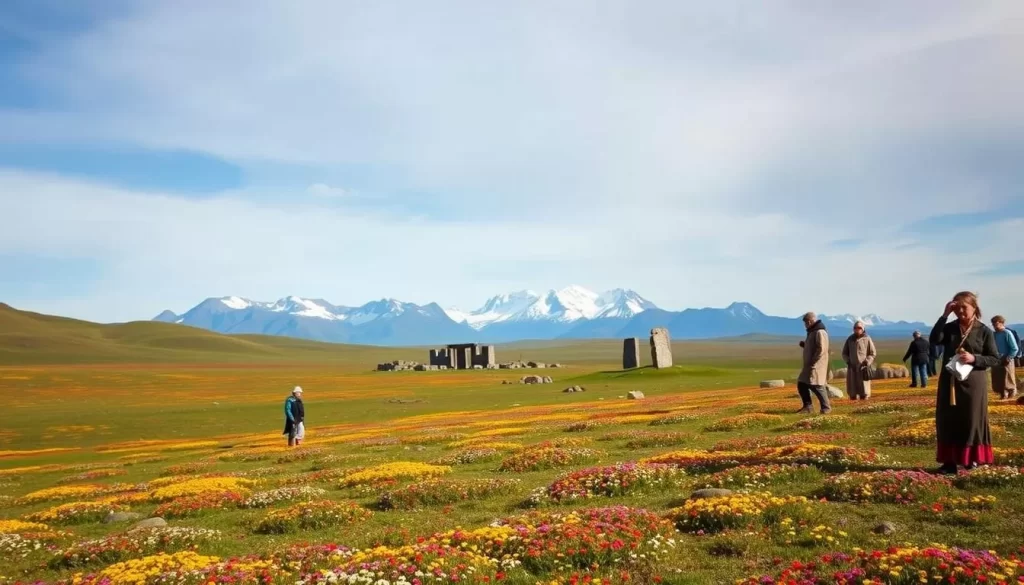
From Little Ice Age to National Park Status
A significant climatic event known as the Little Ice Age had a profound impact on the human habitation of Banks Island. This period of cooling, which lasted from the 14th to the 19th century, forced the Inuvialuit to relocate to warmer regions along the southern coast. The establishment of Sachs Harbour marked a return to permanent settlement on the island. The collaborative efforts between the Inuvialuit, the Government of the Northwest Territories, and the Government of Canada led to Aulavik’s designation as a national park in 1992.
| Event | Time Period | Impact |
|---|---|---|
| Little Ice Age | 14th to 19th century | Forced relocation of Inuvialuit |
| Establishment of Sachs Harbour | Late 19th century onwards | Permanent settlement on Banks Island |
| Aulavik National Park Establishment | 1992 | Protected status for the region |
Unique Features of Aulavik National Park
As you explore Aulavik National Park, you’ll discover a wealth of unique features that make this park a must-visit destination. This Arctic wilderness is characterized by its extreme remoteness and untouched natural beauty, offering an unparalleled adventure experience.
The Thomsen River: World’s Northernmost Navigable River
The Thomsen River is a standout feature of Aulavik National Park, recognized as the world’s northernmost navigable river. This river offers a unique paddling experience through the Arctic tundra, providing breathtaking views of the surrounding landscape and opportunities to spot wildlife such as muskoxen and birds. The river’s serene waters wind through the heart of the park, creating a tranquil and awe-inspiring journey.
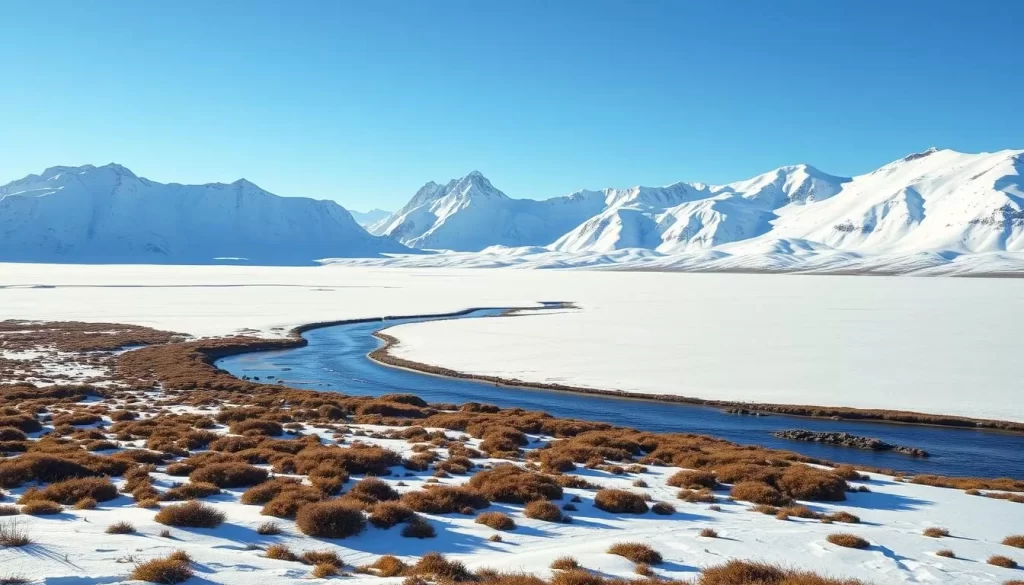
Arctic Tundra Landscapes
Aulavik National Park is a prime example of the Arctic tundra’s stark beauty and resilience. The park’s landscapes are completely treeless, yet they support a surprising diversity of flora, with around 150 species adapted to the harsh conditions. During the brief summer, the tundra transforms with vibrant wildflowers, mosses, and lichens, creating a colorful carpet across the landscape. The rolling hills and valleys provide critical habitat for the endangered Peary caribou, making it a vital area for conservation.
| Feature | Description | Significance |
|---|---|---|
| The Thomsen River | World’s northernmost navigable river | Unique paddling experience |
| Arctic Tundra | Treeless landscape with diverse flora | Habitat for endangered Peary caribou |
| Wilderness Experience | Remote and untouched natural environment | Unparalleled adventure opportunity |
Aulavik National Park is a true wilderness area, offering visitors a chance to experience the raw beauty of the Arctic. As you explore this unique park, you’ll be immersed in the natural world, surrounded by the sights and sounds of wildlife in their natural habitat.
Wildlife Encounters in Aulavik National Park
As you explore Aulavik National Park, you’ll discover an array of wildlife that has adapted to the harsh Arctic environment. The park is a haven for adventure seekers and nature enthusiasts alike, offering encounters with a diverse range of Arctic species.
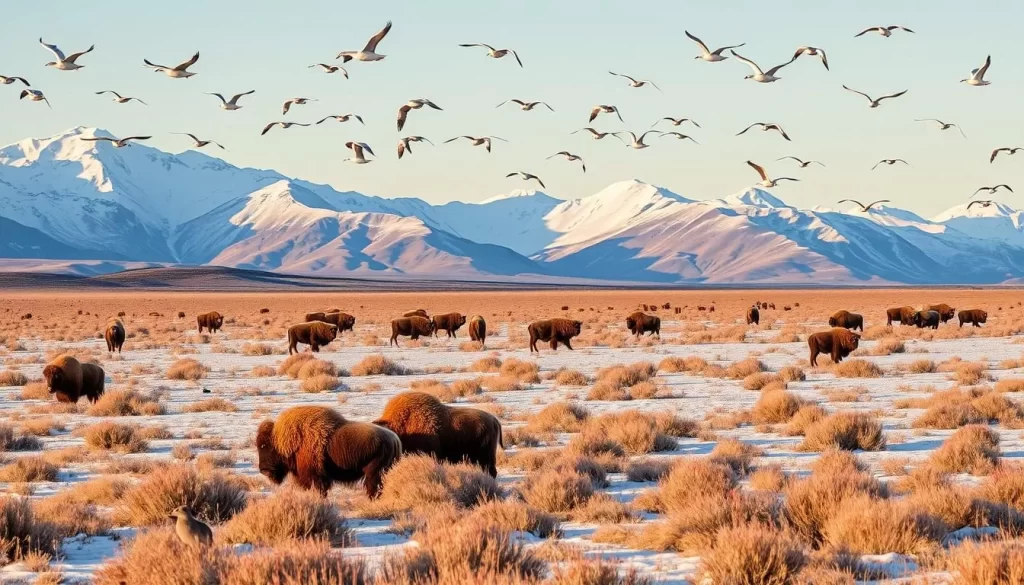
Muskoxen: The Park’s Iconic Residents
Muskoxen are one of the park’s most iconic residents, roaming the tundra in small herds. These majestic animals are well adapted to the harsh Arctic conditions, with their thick coats and defensive formations against predators like bears. Observing muskoxen in their natural habitat is a thrilling experience, offering insights into their social behavior and survival strategies.
Bird Species and Migratory Patterns
Aulavik National Park is a significant stopover for various migratory bird species. The park’s valleys and wetlands provide crucial habitats for birds traveling between their breeding and wintering grounds. Visitors can spot a variety of bird species, from waterfowl to raptors, making it a paradise for birdwatchers. The changing seasons bring different species, enriching the park‘s biodiversity.
Other Arctic Wildlife
Beyond muskoxen, the park is home to a variety of other fascinating Arctic animals. Arctic wolves and foxes can be spotted hunting across the tundra, while grizzly bears inhabit the island, foraging along river valleys. Smaller mammals like Arctic hares and lemmings play vital roles in the ecosystem, and along the coastal areas, visitors may spot marine mammals, including seals and occasionally, polar bears. This diverse wildlife makes every visit to Aulavik an exciting adventure.
Hiking Adventures in Aulavik National Park
Embark on an unforgettable hiking adventure in Aulavik National Park, Northwest Territories. The park’s vast, untouched Arctic landscape offers a unique hiking experience that challenges and rewards adventurers.
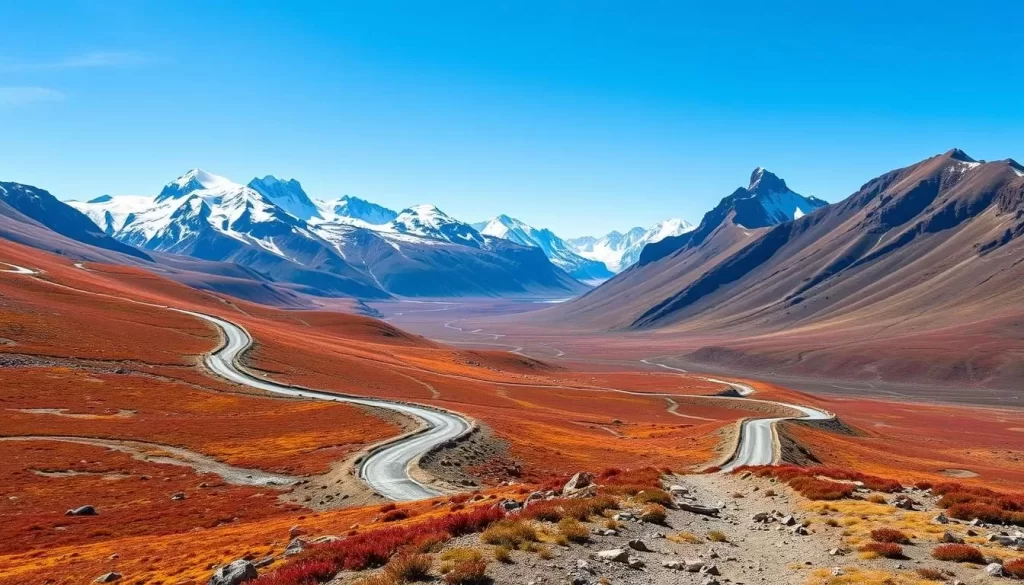
Popular Hiking Routes
Aulavik National Park boasts several hiking routes that traverse its breathtaking tundra landscapes. While there are no marked trails, hikers can explore the park’s vast wilderness, taking in the stunning scenery and spotting wildlife such as muskoxen.
The wilderness experience is unparalleled, with opportunities to witness the park’s unique geological features, including polygonal ground patterns and frost boils.
What to Expect on the Tundra
Hiking across the Arctic tundra presents unique challenges, including uneven terrain, soggy ground, and numerous small stream crossings. You’ll need to be prepared for rapidly changing weather conditions and potential encounters with wildlife.
To ensure a safe adventure, it’s crucial to be aware of the risks, including hypothermia and encounters with territorial muskoxen. Always prioritize safety and be prepared for the unexpected.
Paddling the Thomsen River: A Bucket-List Experience
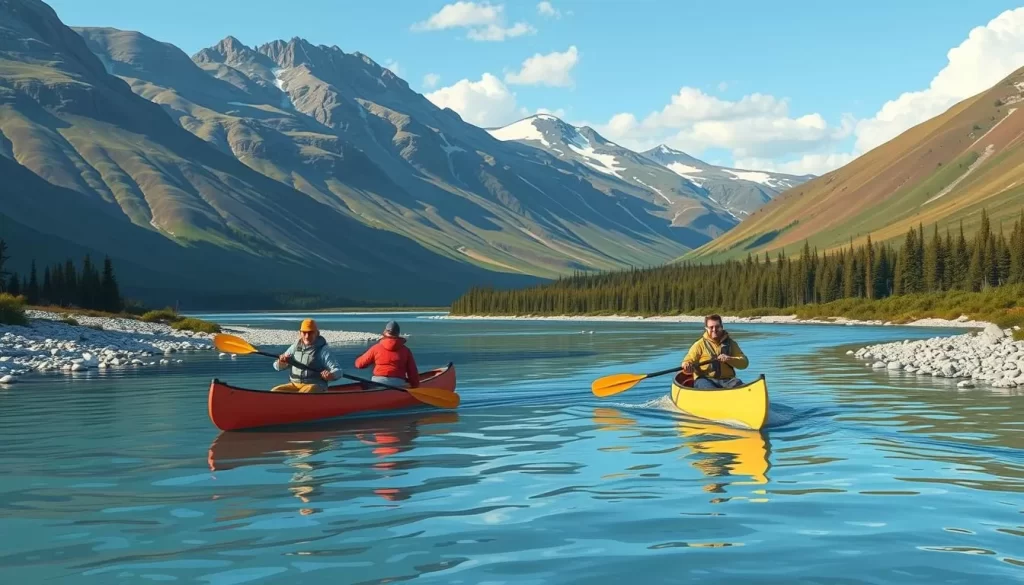
The Thomsen River offers a unique paddling experience that combines Arctic landscapes with rich wildlife viewing opportunities. As you navigate through this remote region, you’ll be immersed in the untouched beauty of Aulavik National Park.
Planning Your Paddling Trip
To plan your paddling trip, consider the 10-14 day journey that covers approximately 160 kilometers of the Thomsen River. This allows ample time for side explorations and wildlife viewing. Ensure you’re prepared for the adventure with the right gear and knowledge of the river’s changing character.
Highlights Along the River
As you paddle down the Thomsen River, you’ll witness an array of wildlife, including muskoxen, Arctic wolves, and numerous bird species. The river also passes by several archaeological sites, offering a glimpse into the region’s rich cultural history. The final stretches of the river, approaching Castel Bay on the Arctic Ocean, are particularly scenic and memorable.
Enjoy your paddling adventure and take in the breathtaking views and unique wildlife encounters that make this experience truly unforgettable.
Camping Under the Midnight Sun
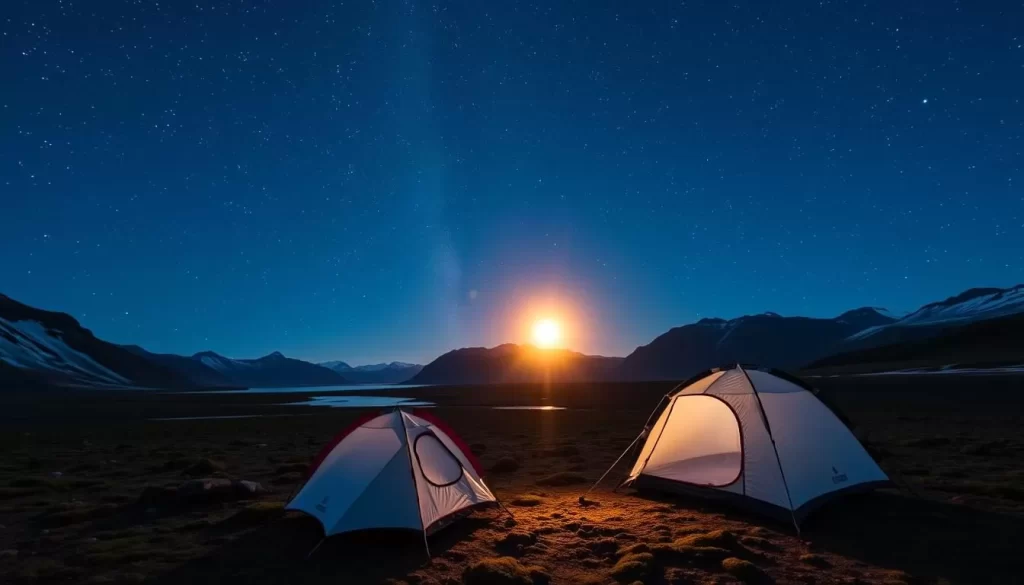
The midnight sun transforms camping in Aulavik National Park into an unforgettable adventure amidst the Arctic wilderness. As one of the most isolated national parks, visitors must be self-sufficient and prepared for emergencies.
Designated Camping Areas
Aulavik National Park has limited facilities, and camping areas are not formally designated. Visitors can set up camp in areas that are safe and minimize environmental impact. The park’s vast, open spaces offer numerous options for camping under the stars or, during the summer, under the midnight sun.
Choosing a safe location is crucial, considering factors like wind protection, proximity to water sources, and potential wildlife habitats.
Essential Camping Tips for the Arctic
Camping in the Arctic requires specialized gear and knowledge. Here are some essential tips for a safe and enjoyable experience:
- Specialized gear: Bring a four-season tent with strong stakes and sleeping bags rated for sub-freezing temperatures.
- Adapting to 24-hour daylight: Use eye masks to create a dark sleeping environment.
- Wildlife safety: Store food properly to avoid attracting Arctic foxes or larger animals.
- Permafrost ground: Use snow/sand stakes or rock anchors for tent setup.
- Layered clothing and emergency warming supplies: Be prepared for sudden cold snaps.
By being well-prepared and aware of the unique challenges of Arctic camping, you can have a safe and memorable wilderness adventure in Aulavik National Park.
Fishing for Arctic Char in Pristine Waters
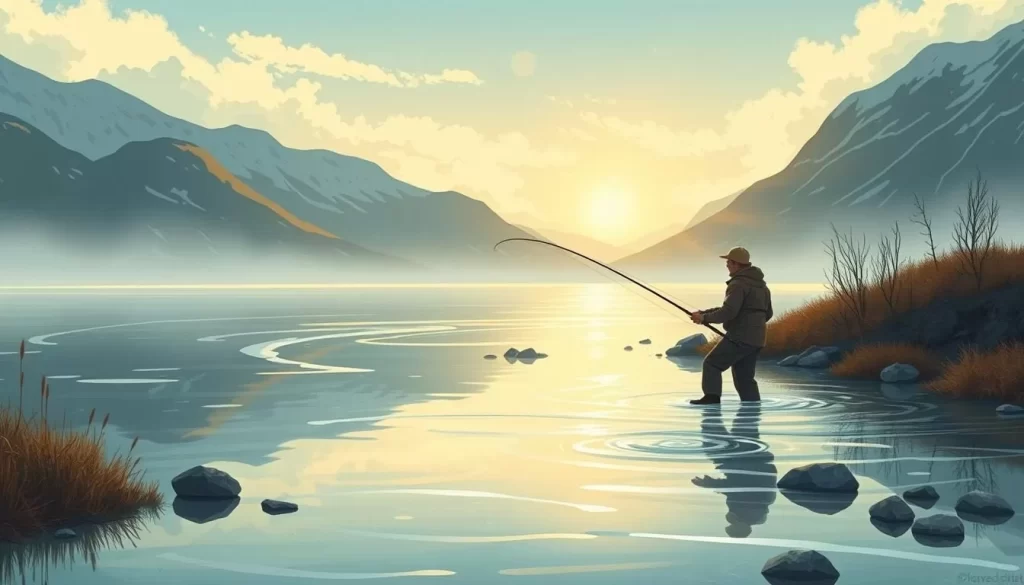
Aulavik National Park’s Thomsen River is a fishing paradise, offering anglers the chance to reel in Arctic char in its untouched waters. The river is home to a healthy population of Arctic char, a species native to the Arctic region.
Fishing Regulations and Permits
Before you start fishing, it’s crucial to familiarize yourself with the park’s fishing regulations and obtain the necessary permits. This ensures that your fishing experience is not only successful but also sustainable and compliant with park rules.
Key regulations include: catch limits, gear restrictions, and designated fishing areas. You can obtain more detailed information on the park’s official website or by contacting park authorities directly.
Best Fishing Spots in the Park
The Thomsen River offers several prime fishing spots, particularly in its middle and lower sections where deeper pools are found. Some of the best locations include:
- The deeper pools along the middle and lower sections of the Thomsen River.
- Tributary confluences where smaller streams join the main river, creating prime habitat for Arctic char.
- The lower reaches of the Thomsen River near its mouth at Castel Bay, known for yielding trophy-sized Arctic char.
For the best experience, consider joining a guided fishing tour. Experienced guides can provide valuable insights into the best fishing spots, optimal fishing times, and techniques.
Photography Opportunities in Aulavik National Park
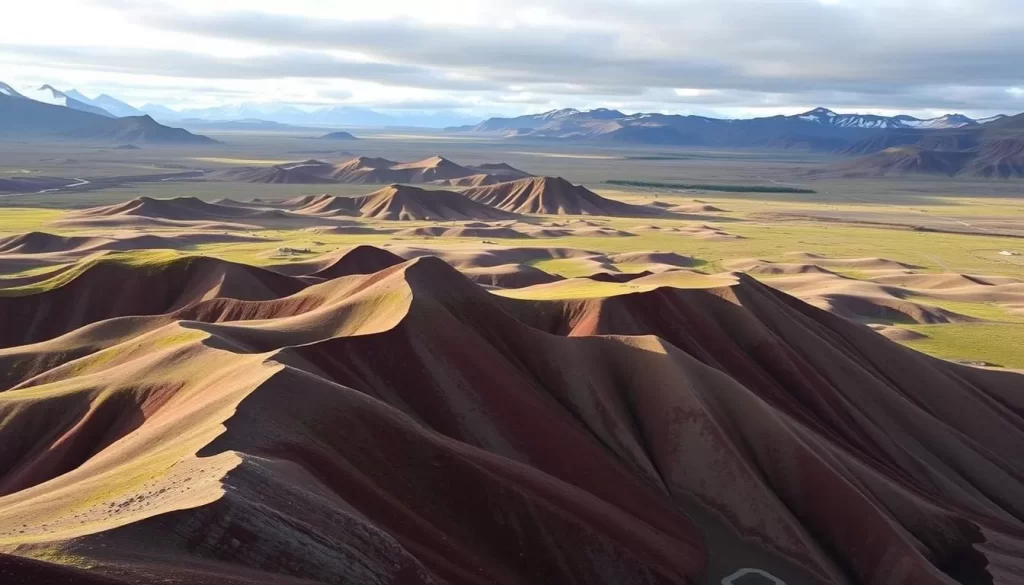
Capture the essence of the Arctic wilderness in Aulavik National Park, where stunning vistas await. The park’s vast, open landscapes offer unparalleled photography opportunities, with rolling tundra creating beautiful foreground elements against distant hills and river valleys.
Capturing Wildlife
Aulavik National Park is teeming with wildlife, providing ample opportunities for photographers. To capture the park’s iconic residents, such as muskoxen, consider using a telephoto lens to get up-close shots without disturbing them. The ever-changing Arctic light can create dramatic conditions, making it ideal for capturing the perfect shot.
Landscape Photography Tips
For landscape photography, a wide-angle lens (16-35mm range) is essential for capturing the expansive Arctic vistas. Meanwhile, mid-range zooms can help isolate interesting landscape details. The constantly changing light, along with weather phenomena like fog banks and dramatic cloud formations, can add spectacular elements to your compositions. Consider bringing graduated neutral density filters to balance the bright Arctic sky with the darker landscape, and don’t forget a sturdy tripod for sharp images in the often windy conditions.
With its picturesque landscapes and diverse wildlife, Aulavik National Park is a photographer’s dream destination. Whether you’re capturing the beauty of the tundra or the majesty of its wildlife, the experience will be one you’ll cherish forever.
Archaeological Sites: Tracing 4,000 Years of Human History
Aulavik National Park is home to a rich cultural heritage, with archaeological sites dating back 4,000 years. As you explore the park, you’ll have the opportunity to visit these sites and learn about the history and culture of the Inuvialuit people.
Significant Archaeological Discoveries
The park’s archaeological sites have yielded significant discoveries, including evidence of ancient campsites, hunting patterns, and trade networks. These findings provide valuable insights into the lives of the people who inhabited this region for thousands of years. By exploring these sites, you’ll gain a deeper understanding of the people and their connection to this place.
Respectful Visitation Guidelines
When visiting archaeological sites, it’s essential to be respectful of the park’s cultural heritage. You can take a guided tour with knowledgeable interpreters to enhance your experience. Be sure to stay on established paths, avoid disturbing artifacts, and refrain from removing any items from the site. By doing so, you’ll help preserve the park’s rich cultural history for future generations.
Best Time to Visit Aulavik National Park, Northwest Territories: Top Picks for Each Season
For those looking to explore one of Canada’s most remote national parks, understanding the best time to visit Aulavik is essential for a safe and enjoyable experience. Aulavik National Park, located in the Northwest Territories, is known for its harsh Arctic environment and unique landscapes.
Summer: The Prime Visiting Season
Summer is considered the prime season to visit Aulavik National Park. During this time, the park experiences almost 24 hours of daylight, allowing for extended exploration. The average July temperatures range from lows of 2.8°C to highs of 9.6°C, making it the most favorable period for outdoor activities such as hiking and paddling. However, it’s crucial to be prepared for unpredictable weather conditions, including sudden storms and fog.
The constant daylight can also be disorienting for some visitors, affecting sleep patterns. Bringing sleep masks and maintaining regular routines can help mitigate this issue.
Weather Considerations
Weather conditions in Aulavik National Park are notoriously unpredictable. Even during the summer, snow is possible, particularly in early June or late August. Visitors must pack appropriate cold-weather gear year-round. Layered clothing, waterproof outer shells, and emergency warming supplies are essential components of any trip to ensure safety in this remote environment.
| Month | Average Low (°C) | Average High (°C) | Weather Conditions |
|---|---|---|---|
| July | 2.8 | 9.6 | Unpredictable, possible fog and storms |
| June | -1.0 | 8.0 | Possible snow, cold snaps |
| August | 1.0 | 7.0 | Cooling temperatures, potential for snow |
Understanding and preparing for these conditions is key to a successful adventure in Aulavik National Park.
How to Access Aulavik National Park

Getting to Aulavik National Park is an adventure in itself, involving charter flights and careful preparation. The park’s remote location in the Northwest Territories means that visitors must plan ahead to ensure a smooth and enjoyable trip.
Charter Flights from Inuvik
The primary means of accessing Aulavik National Park is by charter flight from Inuvik, a small town in the Northwest Territories. Visitors must book a charter flight with an authorized air charter company, which will transport them to one of the four designated landing sites within the park, primarily located along the Thomsen River corridor.
Landing Permits and Requirements
Before your trip, it’s essential to obtain a free Parks Canada Aircraft Landing Permit, a mandatory requirement for all flights entering the park. To secure this permit, you’ll need to complete the visitor registration process with the Parks Canada office in Inuvik, ideally several months in advance. Additionally, all visitors are required to attend a mandatory orientation session, covering safety protocols, environmental regulations, and emergency procedures.
Upon returning from the Western Arctic park, don’t forget to complete the deregistration process with Parks Canada, confirming your safe exit and providing valuable feedback about your experience.
Planning Your Trip: Practical Information
Your adventure to Aulavik National Park begins with meticulous planning and preparation. As you gear up for this unique experience, understanding the practical aspects of your visit is crucial.
Registration Process
Before you embark on your journey, registering with Parks Canada is a necessary step. This process involves obtaining any required permits and ensuring that you’re aware of and comply with park regulations. It’s advisable to start this process well in advance due to the park’s remote location and limited access.
What to Pack for Aulavik
Packing the right gear is essential for a successful trip. You’ll need specialized Arctic equipment, including warm clothing, bear-resistant food containers, and potentially a satellite phone. Many visitors choose to rent equipment from outfitters in Inuvik to avoid the high costs of purchasing specialized gear.
Costs and Budgeting
Budgeting for your Aulavik adventure involves several key expenses. Here’s a breakdown of typical costs:
| Expense | Cost (CAD) | Notes |
|---|---|---|
| Charter Flights | $5,000 – $10,000 | Round-trip, varies by aircraft type and group size |
| Daily Park Fees | $24.50 per person | Additional permits required for activities like fishing |
| Guided Tours | $5,000 – $8,000 per person | Typically for a 10-day tour, includes expertise and logistics |
When planning your trip, consider these costs and the value of a guided tour in enhancing your overall experience, especially if you’re new to Arctic travel or fishing in such conditions.
Safety Guidelines for the Remote Arctic
As you prepare for your adventure in Aulavik National Park, understanding the safety guidelines is crucial for a successful wilderness experience. The park’s remote Arctic environment demands careful planning and preparation to ensure a safe and enjoyable tour.
Wildlife Safety
Encountering wildlife is a thrilling aspect of visiting Aulavik. However, it’s essential to maintain a safe distance from the park’s inhabitants, including muskoxen and birds. Keeping a safe distance not only protects you but also preserves the natural behavior of the wildlife. Be aware of your surroundings and keep an eye out for any signs of wildlife.
- Maintain a safe distance from wildlife at all times.
- Be aware of your surroundings to avoid surprising animals.
- Store food and trash properly to avoid attracting wildlife.
Emergency Preparedness
In the remote wilderness of Aulavik, emergency assistance may be delayed due to weather conditions. It’s crucial to be prepared for emergencies by carrying comprehensive first aid supplies, reliable communication devices, and having a detailed trip plan. Understanding that rescue teams are based in Inuvik and response times can vary is key to being prepared.
- Carry a comprehensive first aid kit and know how to use it.
- Bring reliable communication devices such as a satellite phone.
- Plan your trip meticulously, including potential emergency scenarios.
Guided Tours and Outfitters
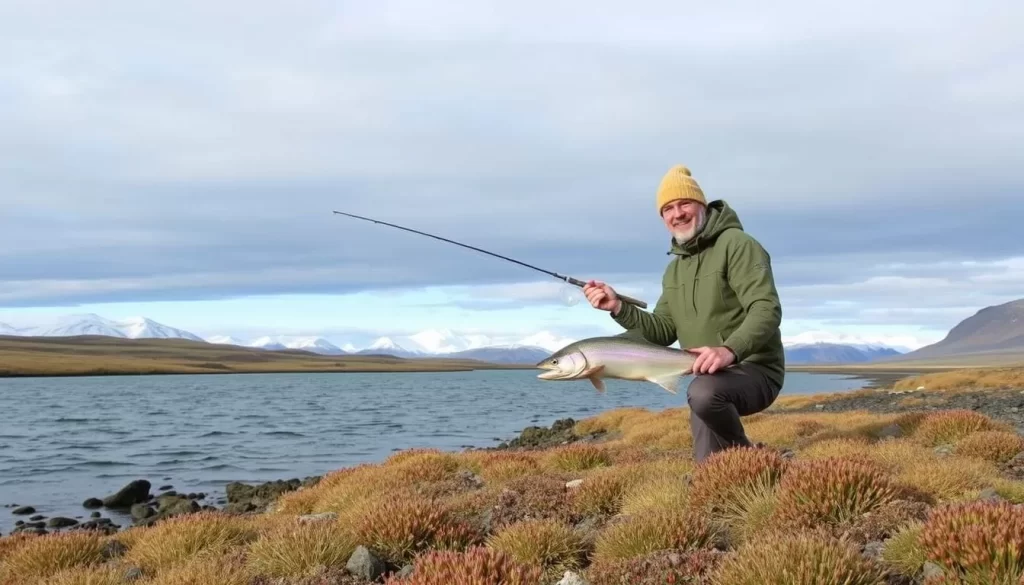
Guided tours in Aulavik National Park provide a unique blend of adventure, education, and safety. If you’re not experienced with Arctic paddling or fishing, consider joining a guided tour to enhance your experience.
Experienced guides can provide equipment, expertise, and knowledge of the best fishing spots, making your trip more enjoyable and successful.
Choosing the Right Guide Service
When selecting a guide service for your Aulavik adventure, consider the benefits they offer. Guided tours typically begin with comprehensive pre-trip planning assistance, including detailed equipment lists and physical preparation recommendations.
- You’ll benefit from the guides’ extensive knowledge of the park’s ecology and wildlife behavior.
- Most guided fishing expeditions include high-quality equipment and instruction in specialized fishing techniques.
What to Expect on a Guided Tour
On a guided tour in Aulavik, you can expect a well-organized trip that handles complex logistics, including meal planning and navigation. Professional guides will facilitate deeper connections with the landscape through their interpretation skills.
- Guides will help you spot wildlife and interesting features that might otherwise go unnoticed.
- You’ll have the opportunity to focus on enjoying the wilderness while your guides handle the details.
- Fishing enthusiasts will appreciate guidance to productive fishing locations.
Conclusion: Embracing the Arctic Wilderness Experience
As you reflect on your journey to Aulavik National Park, you’ll discover that the true essence of the Arctic wilderness lies not just in its breathtaking landscapes, but in the profound impact it has on your perspective. The park represents one of North America’s last truly pristine wilderness areas, offering an unparalleled opportunity to experience the raw beauty and solitude of the high Arctic.
Your adventure will challenge you physically and mentally, but reward you with memories and perspectives that few travelers ever attain. Whether you choose to paddle the Thomsen River, hike across the rolling tundra, or simply sit in contemplation, Aulavik offers a profound connection to the natural world.
The above is subject to change.
Check back often to TRAVEL.COM for the latest travel tips and deals.
